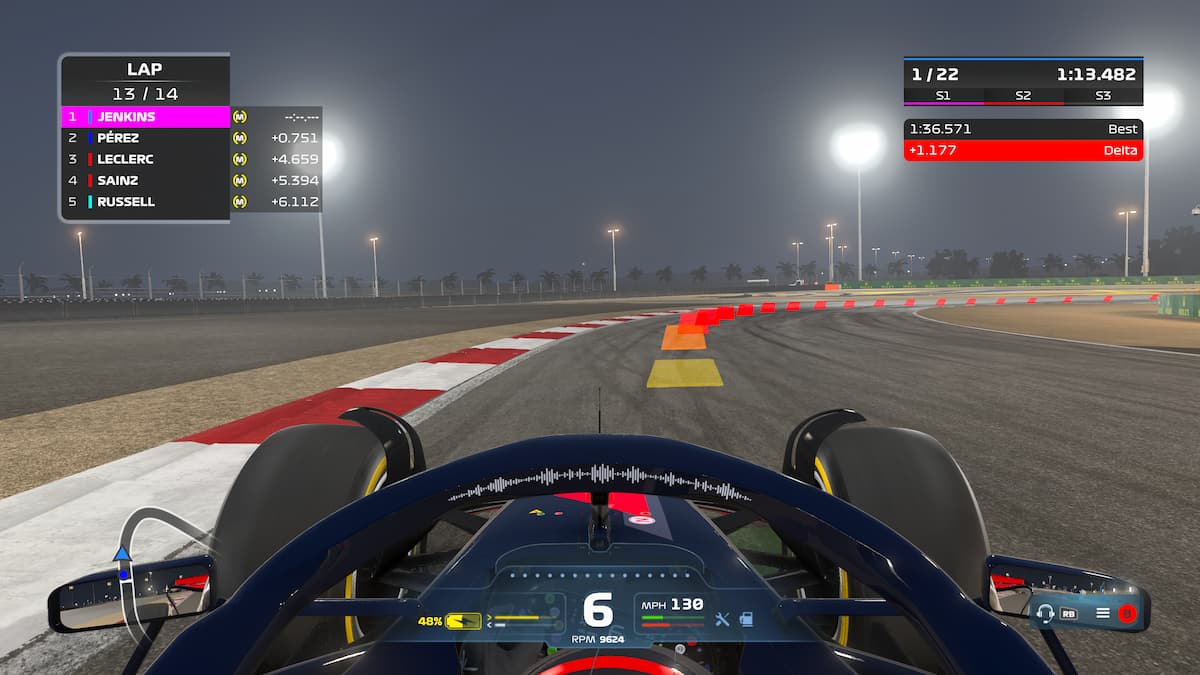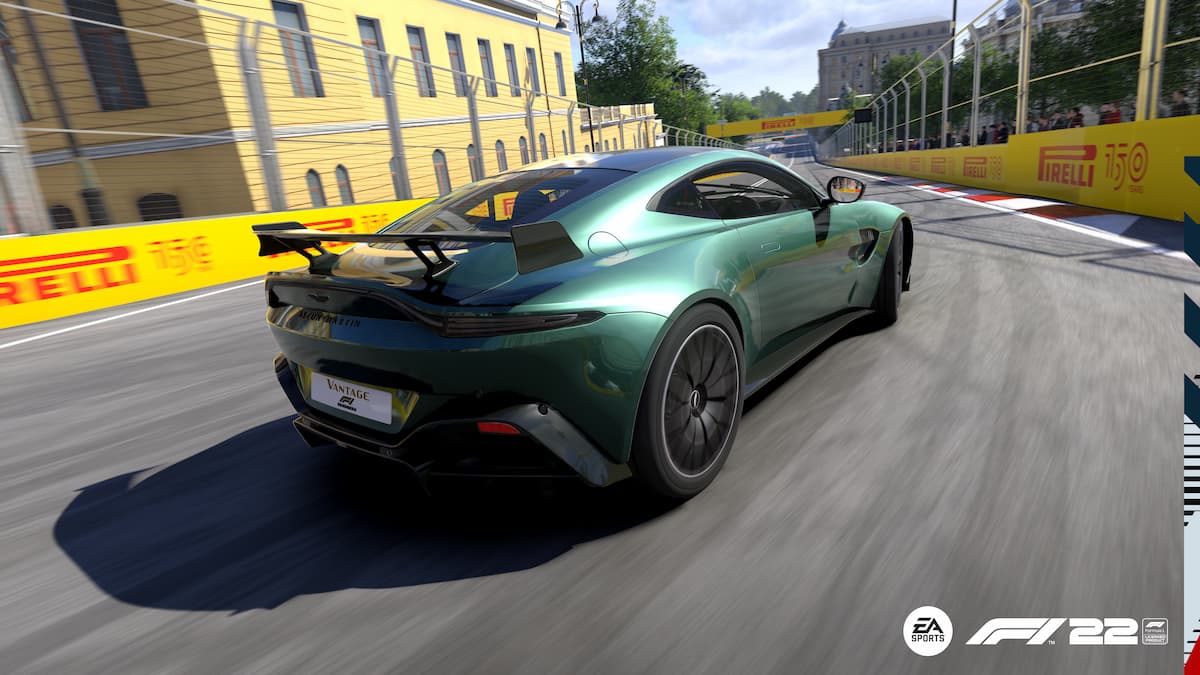F1 22 on Xbox Series X
Following a rather controversial final day of the 2021 season, which saw Max Verstappen snatch the driver’s championship from the clutches of Lewis Hamilton in the final lap in a rather liberal interpretation of the rules, it’s fair to say that the pinnacle of motorsport has skyrocketed in popularity. With the help of Netflix’s Drive to Survive series, Formula 1 is more of a mainstream sport than it arguably ever has been. In the 2022 season, the sport has undergone a number of major rule and regulation changes aimed at making the sport even more interesting to watch, with more wheel-to-wheel action and cars able to follow more closely than ever before.
As such, F1 22 has a lot riding on it. Can it put itself in pole position over its predecessors with a wealth of tweaks and adjustments to the core driving gameplay, or will it spin out on the final corner? Well, it’s a bit of both.
Codemasters and EA claim that F1 22 brings reworked handling and tyre models as well as updated physics to mirror the new cars, rules and regulations of the new real-life season. From my experience over a number of Grand Prix weekends, including three separate practice sessions, qualification, and the mid-length Grand Prix race itself, there’s arguably very little difference to how your car handles in the moment-to-moment gameplay. There’s a little more emphasis placed on ensuring your car’s setup is just right for the tight corners of Monaco or the long straights and gradual turns of Saudi Arabia, but I couldn’t say the general handling and racing gameplay of the series has been completely rewritten in F1 22.
That’s not necessarily a bad thing, though, given how well the series has emulated the high-speed racing of the motorsport in the past. That said, with how drastic the overhaul of the rules, regulations and the requirements of each constructor’s vehicles are impacted in real-life, with the likes of underdogs Haas looking far more competitive, I’d expected a more noticeable difference going from game-to-game. Veteran F1 players may pick up on these minor tweaks, but don’t go in expecting a completely different F1 experience.

This is, for better and worse, the story of F1 22 in most areas, too. Save the addition of Sprint races on particular Grand Prix weekends, and updates to Spain, Australia, and Abu Dhabi to mirror their real-life counterparts, there’s not a whole lot that’s changed from last year.
The fan-favorite My Team mode returns, albeit with three starting points — Newcomer, Challenger, and Front Runner — that allow you to pick the performance and starting budget of your team over the one from last time around, and Career now features expanded department events and threaded cross-race questions, but these make up such a minor part of the experience, it’s nothing to really write home about. Even when choosing the ‘Challenger’ starting point, I still found myself challenging for the Driver’s Championship, while my teammate lingered towards the very back of the grid.
There’s also a wealth of single and multiplayer modes packed in to accommodate whatever amount of time you’ve got spare to sit behind the wheel. One-off races, Grand Prix weekends, and time attacks join the standard Career and aforementioned My Team modes on the single-player front, while quick play, weekly events, splitscreen, Ranked Play and Leagues bring an assortment of modes of varying length for multiplayer antics. Most interesting is the introduction of Leagues, which offers all players the opportunity to compete in a shared multiplayer championship with a fixed roster of players.
These can be set up privately or publicly, and you can set the events to take place at fixed times, or have them ‘on demand’ so you and your friends can drop in and compete against one another, even when your schedules don’t perfectly align. A lot of this has already been seen in previous entries in the series, but it’s still a solid variety of modes on offer and so it’s great to see them all return.
Strangely, the most noticeable improvement over previous years is the introduction of a licensed soundtrack, giving you a thumping backtrack as you navigate menus and plan out your R&D improvements to Aero, Durability, Powertrain and so on. It’s very heavy on the hard-hitting dance-like tracks, but its a welcome enough addition all the same.
The only other major addition in terms of actual gameplay comes in the introduction of Supercars which can be driven-on track during Pirelli Hot Lap Challenges. These will range from drift challenges and average speed traps to checkpoint challenges and handling challenges where you’ll need to thread your car through a series of gates in a segment of the track. These could have made for a nice bit of variety from the standard F1 fare, except for the fact the handling on each and every one of the supercars is horribly floaty and inaccurate. It’s so bad that after doing a handful for the purposes of this review, I just gave up on them, as they were that enjoyable, and the rewards for getting ‘Gold’ in them weren’t worth the hassle.

It’s odd, given Codemasters’ prowess in the racing genre that the supercars feel so poor to drive. I understand that the Formula 1 vehicles are the focal point of F1 22, but if you choose to branch out from this, at least make sure these segments are actually enjoyable to play.
Otherwise, F1 22 feels very much like its predecessor. Practice sessions still involve completing the same set of tasks in order to give your team research bonuses, development boosts and gather important data to inform your strategy for the Grand Prix, and the length of every session can be adjusted to save you some time if you’re not looking to spend hours upon hours on just one race weekend.
The visuals are a bit of a mixed bag here, too. While vehicle models look fantastic, and tracks have a level of visual fidelity which is acceptable when you’re blistering around them at 200mph, the models for pit crew members, journalists, or just other real-life drivers look subpar. Max Verstappen, in particular, appears to have a Red Bull cap on that makes up half of his head, to echo the words of my partner as we scrolled through the roster. Some look better than others, but they all just generally look a little disproportioned and alien, and pit crew members generally lack detail which can make things a little jarring for those moments where you are sitting in your garage. They’re not terrible, but everyone looks like they’ve got incredibly smooth, perfect skin with not a single wrinkle or blemish in sight. It can be easily overlooked as it’s rare you’re staring at them, but it’s a little underwhelming given this is a simulation game, and I played it on the Series X. It almost feels as though these have been copy-pasted over from the PS4 and Xbox One versions of the game without any improvements being made along the way. At least, that was my first impression.
There’s also some weirdness when you choose to drive out of the pit at the start of a free practice or qualification session, with your hands wildly flailing around the steering wheel before the camera changes to your chosen angle. When you’re not behind the wheel and on the meticulously recreated tracks, there’s a lack of polish and finesse in the way F1 22 looks, and that’s a little disappointing for a series so intent on delivering the ultimate F1 simulation experience.
But then you start racing, and all of that fades into the background, as the intricately textured asphalt below your tyres blurs into obscurity as you activate your DRS down a straight and exceed 200mph. It’s a true racing sim, with AI racers that’ll really push you to your limits, thanks to the Adaptive AI difficulty setting that sees AI competitors react to your position on track and adapts their competitiveness based on this.
